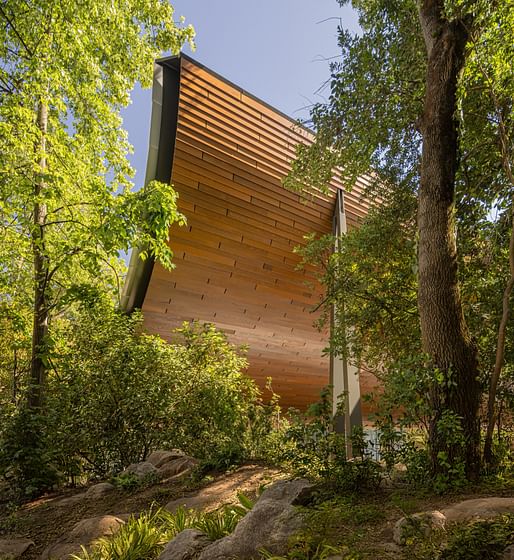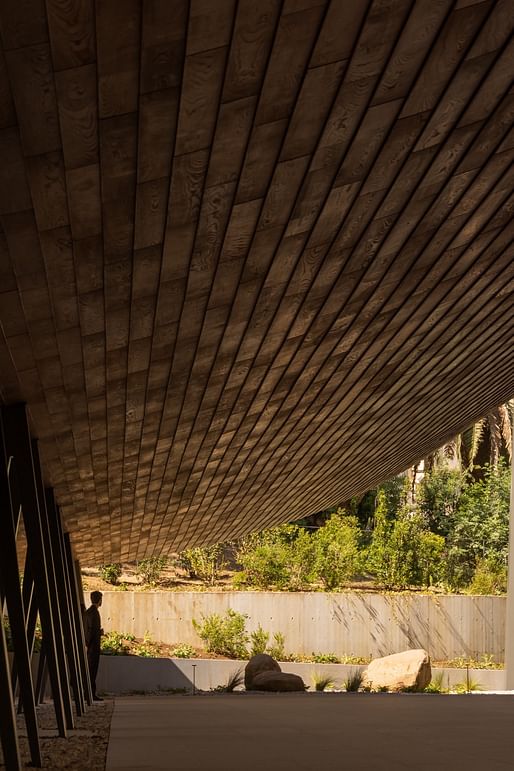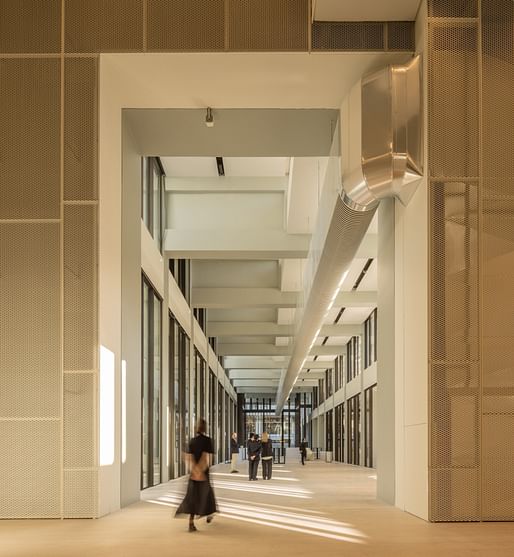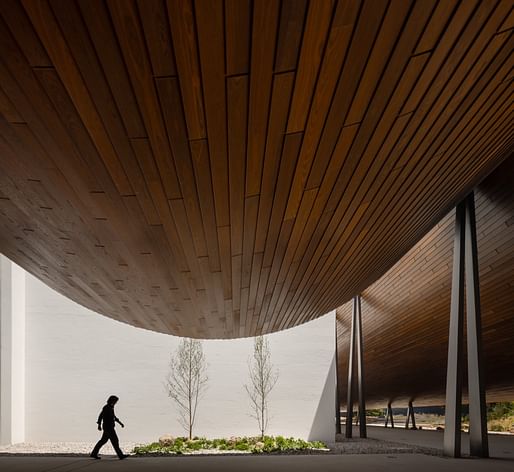
Kengo Kuma and Associates has completed an overhaul of the Centro de Arte Moderna Gulbenkian (CAM) in Lisbon, marking the acclaimed architect’s first completed project in Portugal. Delivered in collaboration with OODA (Oporto Office for Design and Architecture), the scheme draws inspiration from the Engawa, a sheltered walkway typical of Japanese dwellings.

The original CAM center was designed by British architect Sir Leslie Martin and opened in 1983, housing one of the world’s most significant collections of modern and contemporary Portuguese art. The center sits within the wider grounds of Lisbon’s Gulbenkian Foundation, a multi-disciplinary campus of 1960’s buildings in an 18-acre woodland.

Kuma’s new iteration of the center is defined by a 330-foot-long sweeping timber canopy. The canopy was inspired by the Engawa, a sheltered walkway typical of Japanese dwellings, considered neither entirely inside nor outside. Seeking to establish a “soft and humane architecture,” the canopy links the new center with the surrounding gardens.

The center is accessed via a new entrance, with gardens extended to create a “fluid and dense urban forest” by landscape designer Vladimir Djurovic. Inside, the center houses almost 12,000 artworks spanning paintings, sculptures, installations, drawings, prints, photographs, and films. Among the spaces housing the art is a new sunken galley, supported by a new restaurant and shop.

“In our vision for CAM, we craft a seamless fusion, where architecture and nature converse in harmony,” Kengo Kuma said about the scheme. “Inspired by the essence of the Engawa, we unveil a new outdoor narrative, inviting visitors to slow down and make this space their own. The idea of softness and transition is extended to the CAM interior where we created new spaces by subtraction, replicating the building connection to the garden and exterior light.”

News of the scheme comes months after Kengo Kama’s Saint-Denis Pleyel metro station opened in Paris. The firm also recently completed a new audio museum in Seoul described as an “architectural instrument.”
3 Comments
Another cool retrofit that adds a curved sheet to an existing building (compare the the BIG project with the same approach). It creates amazing spaces as a strategy.
this one?
yes
Block this user
Are you sure you want to block this user and hide all related comments throughout the site?
Archinect
This is your first comment on Archinect. Your comment will be visible once approved.